On-boarding is a complex process facilitated by the Customer Success team. This is how complex it is:
- There’s a hand-off from Sales to CX, a Customer Experience Manager creates a Slack channel for the client to interact with.
- Sales introduces the client to the CXM and educates the client over the phone.
- An email is sent containing Google Slides that discusses what Emissary is about and what the expectations are.
- CXM works with the client to understand their organization’s goal and team structure to replicate it in Emissary’s internal system.
- CXM emails or call each individual or manager to understand what accounts they’re working with.
- Finally, CXM on-boards the team to the platform.
It’s ridiculous for the Customer Success team to continue to manually on-board all new clients because it doesn’t scale at all.
By productizing the data collection portion of on-boarding, we take a meaningful step towards self-service on-boarding and best position ourselves to keep up with the growth for SMBEs.
My Role
I led the user research and design of the on-boarding experience. I also worked alongside 2 product managers, and a data analyst.
Assumptions
To understand how we could make this work, we looked at what we had today and built assumptions:
- Clients will be willing to provide the information they’re currently sharing with Customer Success and Sales over the phone/email directly in the Emissary app
- Admins should be able to complete on-boarding in Majestic
- Participation in the Emissary program is impossible without login credentials (username, password)
- We will create on-boarding experiences for the classes of Customer Users currently in Majestic: ‘managers’ and ‘sellers’
What does on-boarding mean?
At the outset of the project, we didn’t have a clear mission or specific goals for the on-boarding experience. I led a series of interviews with our internal teams and clients to get some insights. Alongside this, I worked with two produce managers in leading crazy 8 workshops with team representatives to answer the question.
After reviewing everyone’s ideas, there was consensus that the on-boarding flow in product should provide value up front and a clear contender emerged:
Make it a learning experience
New users are educated on how to use the platform by completing a series of tasks within the dashboard.
For example: I receive an on-boarding email that directs me to a walkthrough form. Once I complete a task, I’m taken to the next task I need to complete.
These are examples of solutions as a result of the workshop.
- Chat bots
- Online Form walkthrough
- Email drip
How is success measured?
Before I could jump into designing, it was important to define success and understand the health of the on-boarding experience. I partnered with a product manager to understand what exists and what gets measured.
Sellers
- % of sellers that receive an invitation to create an Emissary account in relation to # sellers attached to the customer in Majestic.
- % of sellers that receive an invitation and complete the process of creating an account
Managers
- % of managers that receive an invitation to create an Emissary account in relation to # managers attached to the customer in Majestic
- % of managers that receive an invitation and complete the process of creating an account
Aligning people’s needs with goals
Understanding what our users want and where they’re confused on is critical before a design. I worked with a product manager in leading a series of client’s interviews to form the building blocks of personas.
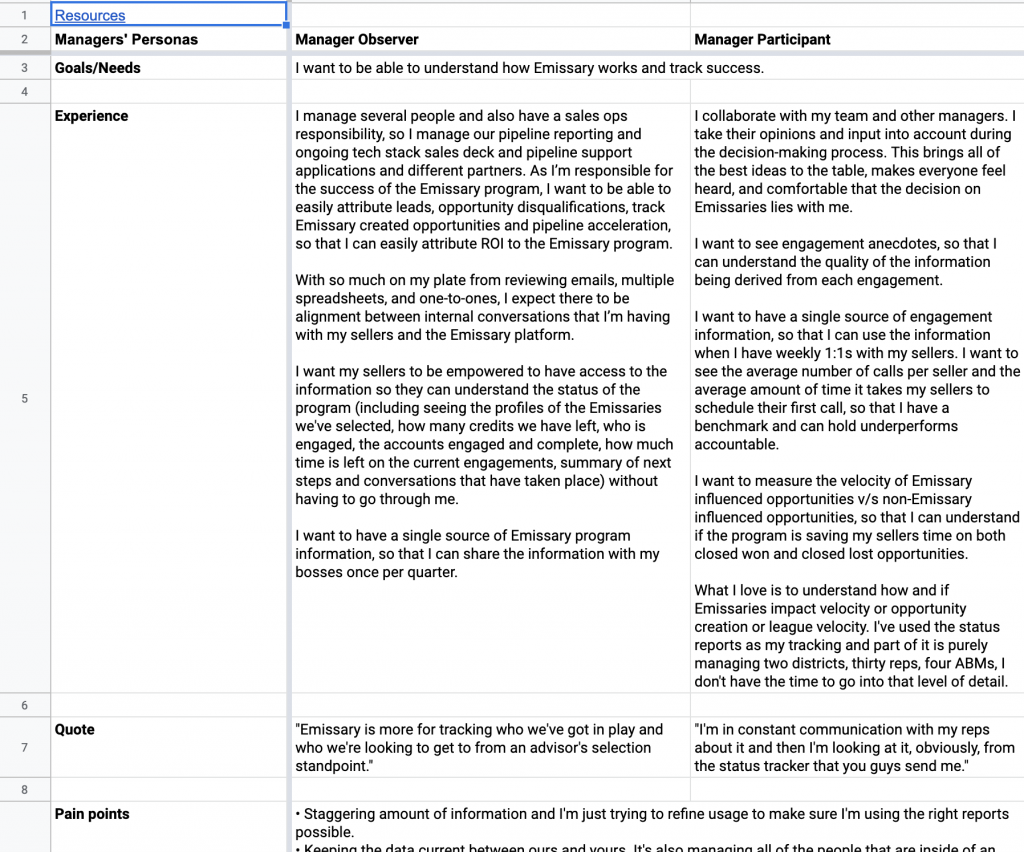
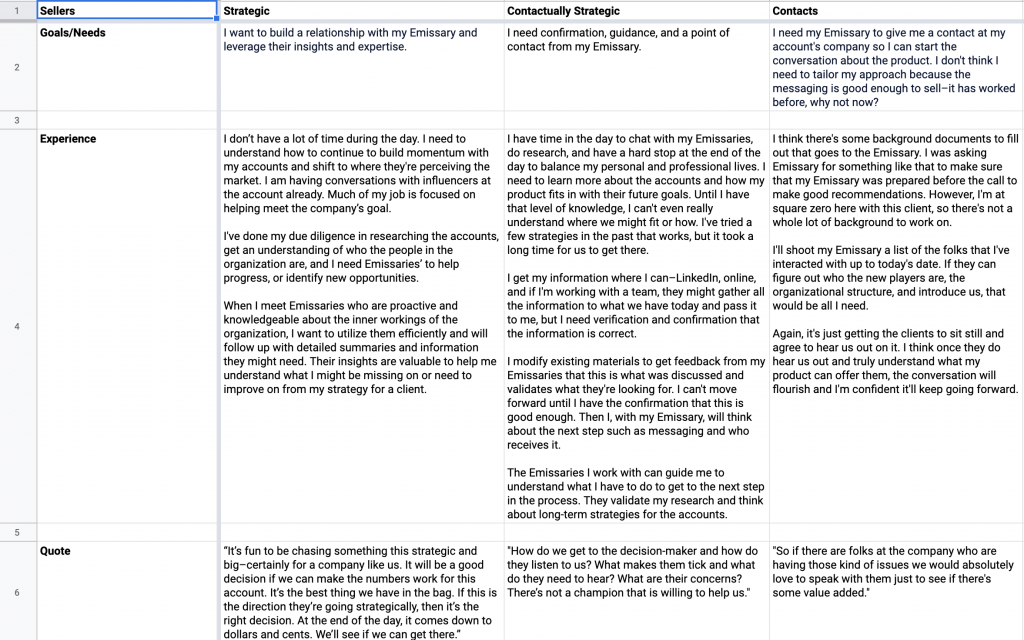
Not only considering the user needs is important, but also considering business needs also important. So, I identified the core goals and pain points for both business and end users and listed them. This step helped decrease the gap between business and end users and to design a better solution which helped both the groups.

Information Architecture
Before starting a design, it’s important to understand the information architecture (IA). IA is a visual representation of the digital product’s features, navigation and hierarchy.


Wireframes
Since I had the IA on hand, it was easy to come up with low-fidelity ideations. During this process, I came up with different designs and reached out to engineers for feedback, which narrowed during each process forward.
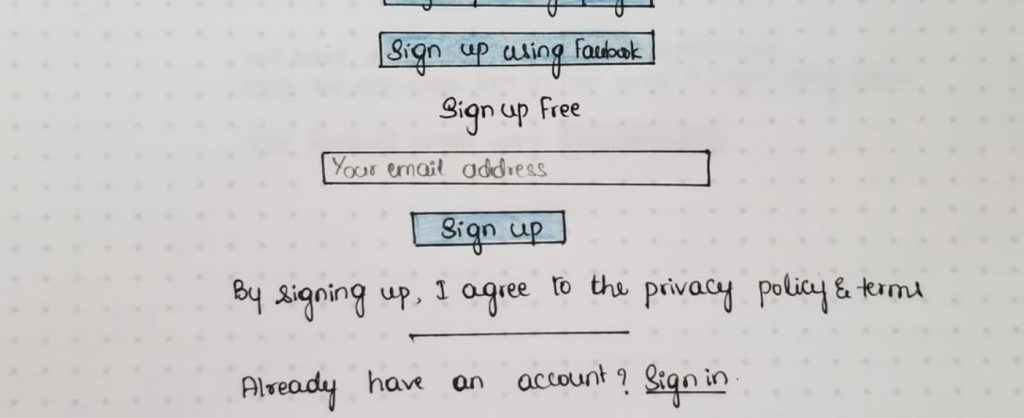
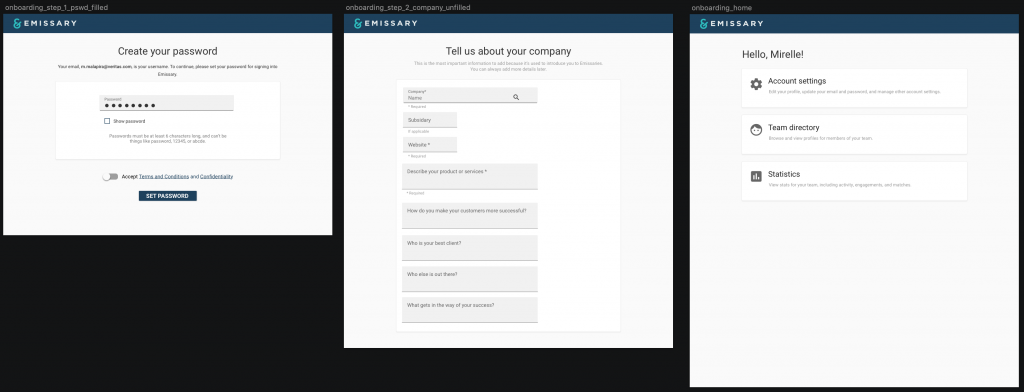
After many iterations of sketches, a low fidelity wireframe (web and mobile) emerged for both managers and sellers.
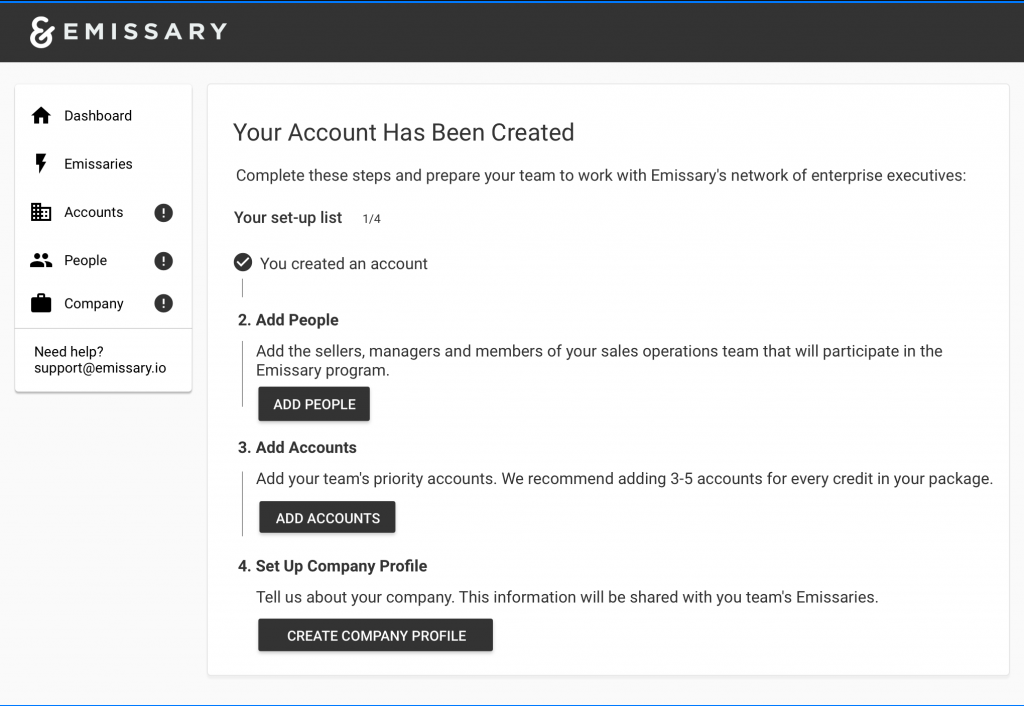
Prototype
Once the base wireframes were ready, I created a working low fidelity InVision prototype of the designed screens. The task flows observed in the prototype are:
- New user sign-up flow
- People set-up
- Account set-up
- Company set-up
Evaluations
Evaluating the product is important in any industry. So, I created a usability test plan. Usability testing was conducted using the low fidelity prototype of the application. The test was used to assess usability, navigation, content & call to action in the built task flows; identify errors and gain user’s feedback on their preferences and recommendations and assess the overall success of the prototype. The test was conducted via a moderated remote setting. The overall test findings helped identify key areas for improving user interaction and identify error states.
From the overall test findings it can be inferred that the prototype is a success, with respect to a majority of workflows.
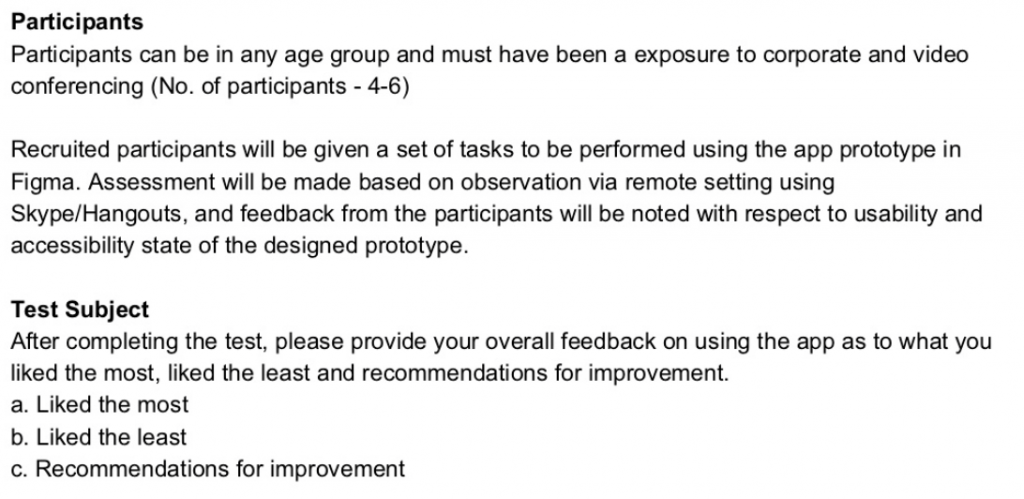
Observations
- There was a huge time saver to onboard existing users over the phone and to the prototype. The new prototype has saved an average time of 1-2 weeks.
- There were no errors during all tasks performed with existing app and new prototype.
Conclusions
This made us realize that there were features we had to tackle first before on-boarding such as permissions management, the ability to add accounts, and teams. This project was on hold due to building those features.